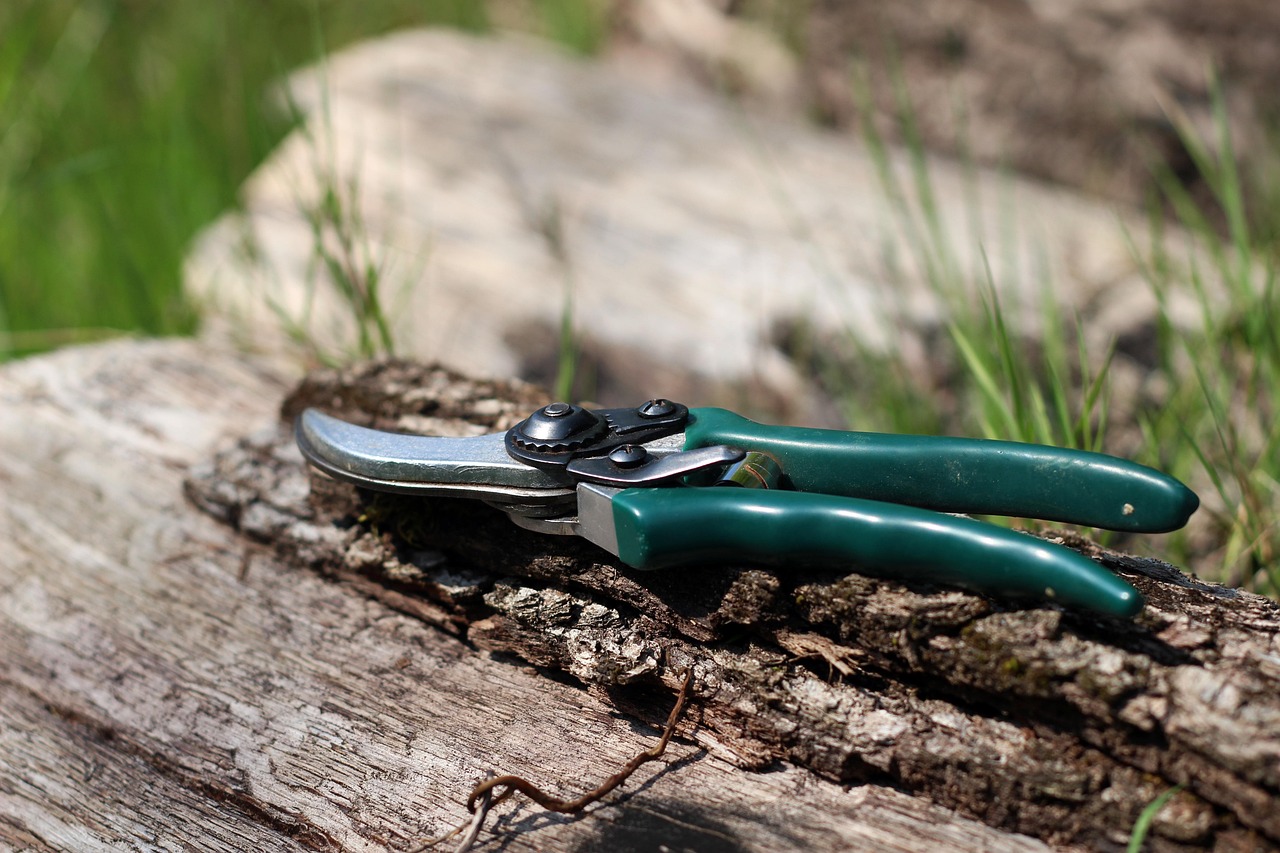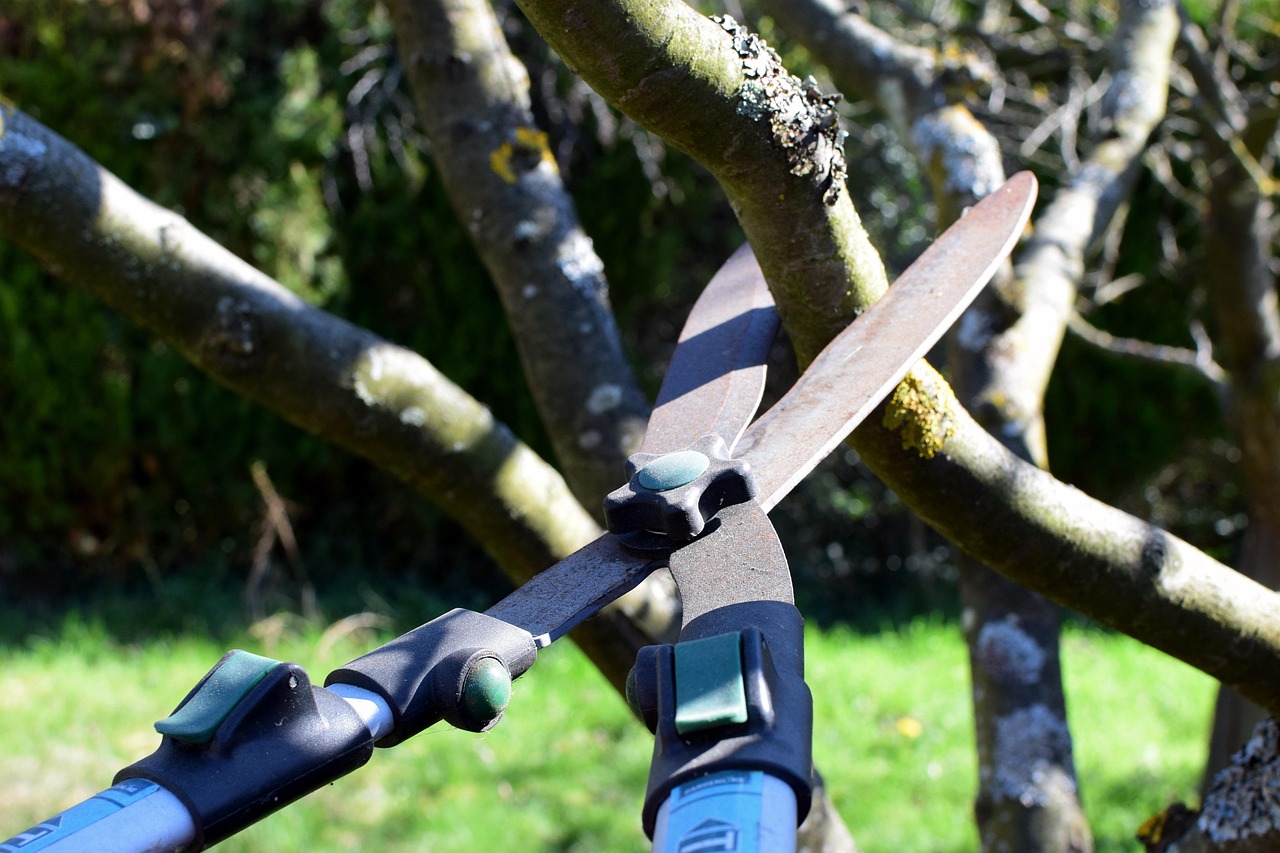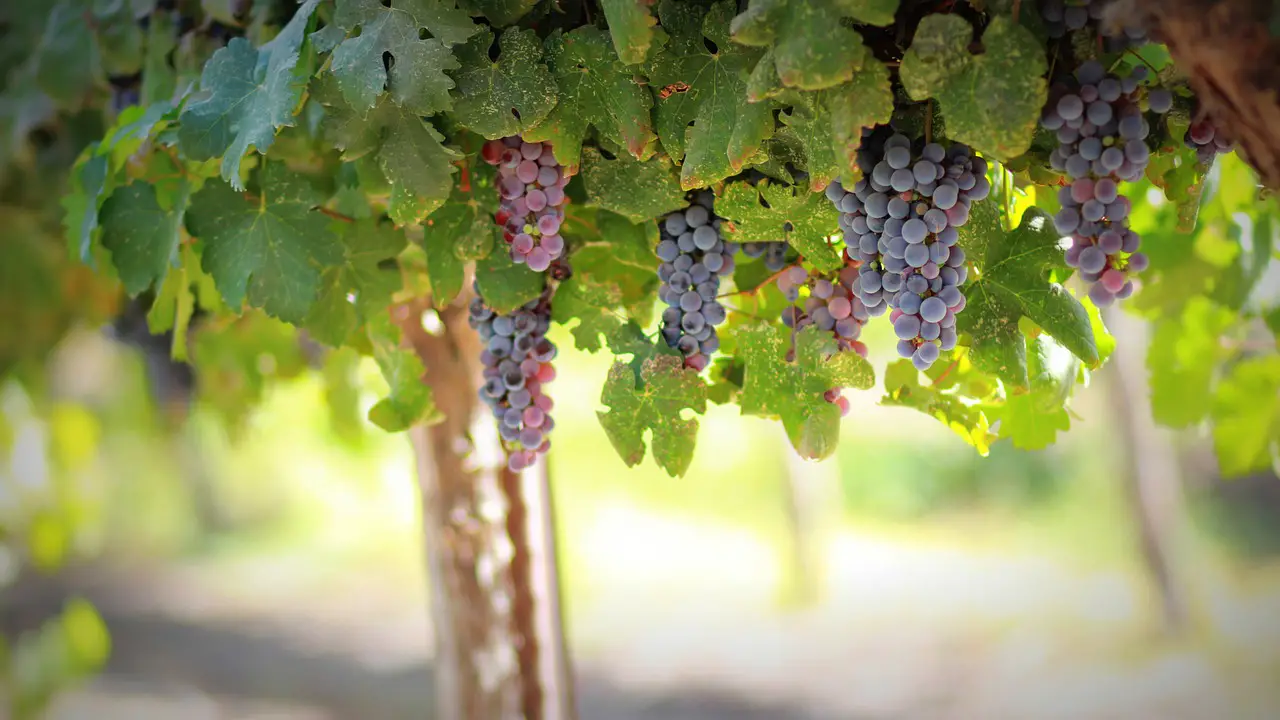Pruning grapevines effectively is vital for producing larger grape bunches. It involves managing vine growth to improve air circulation and sunlight exposure, crucial elements for robust fruit development. By learning proper pruning strategies, anyone can enhance their grapevine’s productivity, ensuring healthier vines and a more bountiful harvest each season.
Grapevines are cultivated worldwide for their fruit, leaves, and even as ornamental plants. However, to achieve a bountiful harvest, particularly with larger grape bunches, effective pruning is crucial. Pruning involves cutting back certain parts of the vine to promote healthy growth and fruit development. It can seem daunting at first, but with the right techniques and timing, anyone can learn to prune effectively.

The main goal of pruning is to ensure that the plant’s energy is directed towards the most productive parts of the vine. By removing excess growth, you allow for better light penetration and airflow, which are vital for the health of the grapes. A well-pruned vine can produce larger bunches of grapes due to improved nutrient distribution.
Understanding Grapevine Growth
To effectively prune grapevines, it is essential to understand their growth patterns. Grapevines grow in cycles and have specific growth phases throughout the year. Here are some key points about their growth:
- Bud Break: This occurs in early spring when new shoots begin to emerge from the buds.
- Flowering: After bud break, flowers develop, which will later turn into grapes.
- Fruit Set: Following flowering, the fertilized flowers develop into small grapes.
- Veraison: This is the period when grapes begin to ripen and change color.
- Harvest: Finally, grapes are harvested once they reach their desired ripeness.
Each of these stages influences when and how you should prune your vines. Timing is critical; pruning too late or too early can impact yield and fruit quality. Understanding the growth cycle can help you make informed decisions about when to prune your grapevines.

Types of Pruning Techniques
There are several approaches to grapevine pruning, each suited for different types of vines and desired outcomes. Here are some common techniques:
- Cane Pruning: This method involves leaving a few canes from last year’s growth. It encourages a balance between new growth and fruit production.
- Sucker Removal: Suckers are shoots that grow from the base of the vine. Removing them helps redirect energy to fruit-bearing canes.
- Thinning: This involves selectively removing clusters of grapes to allow better air circulation and sunlight exposure.
Choosing the right technique depends on various factors, including the grape variety, the training system used, and the overall health of the vine. Each method has its benefits and can lead to larger bunches when executed correctly.
Optimal Timing for Pruning
The timing of pruning plays a significant role in the health and productivity of grapevines. The best time to prune is typically during the dormant season, which is late winter or early spring before bud break. Pruning at this time encourages vigorous new growth as the vines wake from dormancy.

| Season | Activities | Effects on Vine |
|---|---|---|
| Winter | Prune dormant vines | Encourages healthy growth in spring |
| Spring | Sucker removal | Redirects energy to fruit-bearing canes |
| Summer | Thinning fruit clusters | Improves air circulation and sunlight exposure |
Pruning at the right time not only encourages larger bunches but also helps prevent diseases by reducing overcrowding and improving airflow around the vine. Regular maintenance throughout the growing season is also essential for optimal vine health.
The balance between pruning techniques, timing, and understanding grapevine growth is crucial for anyone looking to enhance their vineyard’s productivity. By mastering these aspects, grape growers can enjoy larger grape bunches and healthier vines year after year.
Tools for Effective Pruning
Having the right tools is essential for effective grapevine pruning. Using the appropriate equipment not only makes the task easier but also ensures clean cuts that promote healthy vine growth. Here are some essential tools for pruning grapevines:

- Pruning Shears: A sharp pair of pruning shears is essential for cutting stems and canes. Look for bypass shears, which provide clean cuts.
- Loppers: For thicker branches, loppers offer more leverage and can cut through larger vines without damaging the plant.
- Hand Saw: A hand saw is useful for removing larger branches that are too thick for shears or loppers.
- Gloves: Protective gloves help prevent injuries from thorny vines or sharp tools.
- Disinfectant: A disinfectant solution can be used to clean tools between cuts to prevent the spread of diseases.
Using the right tools ensures that your pruning is efficient and effective. Regular maintenance of your tools, including sharpening and cleaning, will enhance their performance and longevity.
Common Mistakes in Grapevine Pruning
Even experienced gardeners can make mistakes when pruning grapevines. Being aware of common pitfalls can help you avoid damaging your vines and ensure larger bunches of grapes. Here are some frequent mistakes to watch out for:
- Pruning at the Wrong Time: Pruning too late or too early can lead to poor growth and reduced yields.
- Over-Pruning: Removing too many canes can stress the vine, leading to fewer grapes and smaller bunches.
- Neglecting Air Circulation: Failing to thin out excess foliage can lead to poor air circulation, increasing the risk of fungal diseases.
- Ignoring Vine Type: Different grape varieties have different pruning needs. Ignoring these specifics can result in poor growth.
By recognizing these mistakes, you can take steps to avoid them and create an environment that supports healthy grape production.
Understanding the Role of Vine Training Systems
The way you train your vines significantly impacts how you prune them. Vine training systems are methods used to shape the growth of grapevines. Proper training helps maximize sunlight exposure and airflow, which are essential for larger fruit development. Here are some common vine training systems:
- Cordon Training: This method involves training the vine to grow along a horizontal wire. It allows for easier access and better fruit visibility.
- Guyot Training: In this system, one or two canes are left on the vine each year, promoting new growth while ensuring fruit production.
- Sustainable Practices: Incorporating organic methods into your training can improve soil health, which benefits vine growth.
Choosing the right system for your vineyard will influence your pruning strategy and ultimately affect the size of your grape bunches. Training systems should be chosen based on climate, grape variety, and personal preferences.
The Impact of Weather Conditions
Weather conditions can significantly affect grapevine health and yield. Understanding how different weather elements impact your vines will help you make better pruning decisions. Here are some key weather factors that influence grapevine growth:
- Temperature: Grapevines thrive in warm climates but can be sensitive to extreme cold or heat. Cold snaps can damage buds, while excessive heat may stunt growth.
- Rainfall: Adequate rainfall is vital for vine health. However, excessive moisture can lead to diseases like powdery mildew, requiring careful pruning management.
- Sunlight: Grapevines need plenty of sunlight for photosynthesis. Pruning should aim to maximize light exposure to the fruiting areas.
By monitoring weather conditions throughout the growing season, you can adjust your pruning techniques accordingly to mitigate potential issues and promote larger bunches of grapes.
Pest and Disease Management
Pests and diseases pose a significant threat to grapevines. Effective management strategies should be incorporated into your overall care routine, including during the pruning process. Here are some common pests and diseases affecting grapevines:
- Powdery Mildew: A fungal disease that flourishes in humid conditions. Regular pruning for airflow can help prevent outbreaks.
- Botrytis Bunch Rot: A mold that affects grapes during ripening. Thinning clusters during pruning can reduce humidity around the fruit.
- Aphids: These pests feed on vine sap and can weaken plants. Monitoring and treatment during pruning can help manage infestations.
Incorporating pest and disease management into your pruning routine will help maintain vine health and promote larger bunches. Regular inspections after pruning will allow you to catch any potential issues early.
Overall, understanding the tools, techniques, common mistakes, vine training systems, weather impacts, and pest management strategies will empower grape growers to achieve larger bunches through effective pruning practices. By implementing these strategies, you enhance not only the quality of your grapes but also the overall productivity of your vineyard.
Advanced Pruning Techniques for Larger Bunches
For those looking to maximize grape yields and produce larger bunches, advanced pruning techniques can make a significant difference. These methods go beyond basic pruning and require a deeper understanding of vine physiology and growth patterns. Here are some advanced techniques to consider:
Double Guyot Pruning
This technique is an extension of the traditional Guyot method. It involves training two canes from each vine, which allows for more fruit-bearing wood and better distribution of grapes. Here’s how it works:
- Choose two strong canes from the previous year’s growth.
- Cut back the canes to about 10 to 12 buds, ensuring that the remaining buds are healthy.
- Secure the canes horizontally along the trellis wire to maximize sunlight exposure.
Double Guyot pruning encourages a robust growth structure and ensures that the vine can produce larger clusters of grapes due to the increased number of healthy buds.
Cordon Spur Pruning
Cordon spur pruning is another effective method for producing larger bunches. This technique involves establishing a permanent cordon along the trellis wire, with spurs left behind to grow new shoots. Here’s how to implement this method:
- Establish a horizontal cordon by pruning the vine to maintain a single trunk with lateral arms.
- Leave short spurs of about 2-3 buds on these lateral arms each year.
- Remove excess shoots during the growing season to focus the vine’s energy on the spurs.
This method helps maintain consistent production levels while promoting larger and healthier grape clusters.
The Importance of Nutrient Management
Nutrient management plays a vital role in grapevine health and yield. Proper nutrition supports vine vigor and improves grape quality. Here are key nutrients that are particularly important for grapevines:
- Nitrogen: Essential for leaf development and overall vine vigor. However, excessive nitrogen can lead to excessive foliage at the expense of fruit.
- Phosphorus: Crucial for root development and flower formation, phosphorus encourages larger fruit sets.
- Potassium: Important for fruit quality and disease resistance, potassium helps regulate water uptake in plants.
Conducting soil tests can help determine nutrient deficiencies and guide fertilization practices. Fertilizers should be applied based on the specific needs of the vineyard, considering both soil conditions and grape variety.
Water Management Techniques
Water management is essential for optimal grapevine growth. Grapevines require consistent moisture levels for healthy development, but overwatering can lead to root rot and other issues. Here are some effective water management techniques:
- Drip Irrigation: This method delivers water directly to the root zone, reducing water waste and allowing for precise moisture control.
- Soil Moisture Monitoring: Utilizing moisture sensors can help determine when to irrigate, ensuring that vines receive adequate water without over-saturation.
- Mulching: Applying organic mulch around the base of vines retains moisture in the soil while suppressing weeds.
Implementing these water management techniques will not only support healthy vine growth but also contribute to the production of larger grape clusters.
Seasonal Care Practices
In addition to pruning, several seasonal care practices can enhance grape production. These practices include canopy management, pest monitoring, and disease prevention strategies. Each season offers unique opportunities for maintaining vine health:
Spring Care
During spring, as vines begin to grow actively, it’s crucial to manage their development effectively:
- Monitor bud break closely to identify any frost damage early.
- Thin out excessive shoots that emerge from the base of the vine.
- Apply fertilizers as needed based on soil test results.
Summer Care
In summer, focus shifts toward canopy management and pest control:
- Regularly inspect foliage for signs of pests or diseases.
- Perform shoot positioning and leaf removal to improve sunlight exposure.
- Implement irrigation schedules based on weather patterns and soil moisture levels.
Fall Care
The fall season is essential for preparing vines for winter dormancy:
- Monitor grape ripeness to determine optimal harvest timing.
- Clear debris around the base of vines to reduce disease risk during winter.
- Plan winter pruning strategies based on this year’s growth patterns.
A proactive approach throughout each season will enhance vine health, ultimately leading to larger and more abundant grape bunches.
Maintaining a Healthy Vineyard Ecosystem
A successful vineyard goes beyond just pruning techniques and seasonal care. It requires a holistic approach that considers the entire ecosystem in which the vines grow. This includes managing soil health, biodiversity, and water conservation practices that can enhance grape quality and yield. Here are some key strategies:
Soil Health Management
Healthy soil is the foundation of any vineyard. Soil management practices ensure that your vines receive the nutrients they need to thrive. Here are some methods to promote soil health:
- Cover Crops: Planting cover crops can prevent erosion, improve soil structure, and increase organic matter. They also provide habitat for beneficial insects.
- Composting: Adding compost to your soil enriches it with nutrients and improves moisture retention.
- Crop Rotation: Rotating different crops can break pest cycles and enhance soil fertility.
Implementing these practices not only supports vine health but also contributes to the overall sustainability of the vineyard.
Biodiversity in the Vineyard
Encouraging biodiversity within and around your vineyard can lead to a healthier ecosystem. A diverse environment can provide natural pest control and enhance pollination. Here are some tips for promoting biodiversity:
- Plant Native Species: Incorporate native plants into the landscape to attract beneficial insects and pollinators.
- Create Habitats: Install birdhouses or insect hotels to support wildlife that can help manage pests.
- Avoid Pesticides: Limit the use of chemical pesticides to promote a diverse range of organisms in your vineyard.
By fostering biodiversity, grape growers can create a more resilient vineyard that reduces dependency on chemical inputs while enhancing grape quality.
Water Conservation Strategies
Water is one of the most critical resources in viticulture. Implementing effective water conservation strategies can help protect this valuable resource while ensuring your vines receive the moisture they need:
- Rainwater Harvesting: Collecting rainwater for irrigation can reduce water costs and reliance on municipal sources.
- Soil Moisture Sensors: These devices help monitor soil moisture levels, ensuring that irrigation occurs only when necessary.
- Xeriscaping: Designing your landscape to reduce water use through drought-resistant plants can conserve water in the vineyard.
These water management techniques will help create a more sustainable vineyard while promoting healthy vine growth and larger grape clusters.
Engaging with Community and Education
Engaging with the local community and participating in educational opportunities can enhance your vineyard’s practices. Here are some ways to connect:
- Join Local Agricultural Groups: Networking with other growers provides access to shared knowledge and resources.
- Attend Workshops and Seminars: Participating in educational events keeps you updated on the latest viticulture research and techniques.
- Offer Tours and Tastings: Sharing your vineyard experience with the public fosters community interest and support for sustainable practices.
Education and community engagement not only benefit vineyard management but also enhance consumer awareness about sustainable viticulture practices.
Final Thoughts
Grapevine pruning for larger bunches is a multifaceted endeavor that combines art, science, and a deep understanding of vine physiology. Through proper techniques, seasonal care, and an awareness of the vineyard ecosystem, growers can achieve impressive results in both quality and quantity. The journey towards larger grape bunches is not solely about cutting back branches; it’s about fostering a thriving environment where the vines can flourish.
By implementing advanced pruning techniques, managing soil health, promoting biodiversity, conserving water, and engaging with the community, you create a sustainable vineyard ecosystem that supports long-term success. As you refine your pruning practices and overall vineyard management, you will not only enhance the health of your grapes but also contribute positively to the environment and local agricultural community.
The path to larger bunches begins with knowledge and dedication. By continually learning and adapting your methods, you can ensure that your vineyard remains productive, sustainable, and rewarding for years to come.
